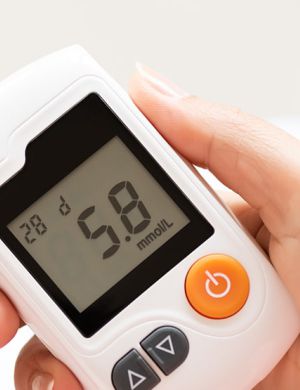
New Developments in Treatment of Rare Diseases
Rare diseases are a complex of over 5000 pathologies representing 10% of the entire human pathology. The European Commission decided to consider those pathologies whose incidence does not exceed 5 cases per 10,000 inhabitants as rare diseases. Rare diseases have in common:
- Chronic and disabling features which have social implications
- Challenges in diagnosis
- Difficulty in treating: There are no effective therapies and no targeted drugs are available (due to limited market, there is little interest in developing the research and production of so-called orphan drugs)
- A limited number of specialized centers for diagnosis and treatment
- Difficulties in identification and access to patients
- Fragmentation of patients between centers, an obstacle to controlled clinical trials and to therapeutic innovations.
A total of 80% of rare diseases are of genetic origin and most of them occur in pediatric patients.
The Orphan Drug Act (ODA) defines a rare disease as any disease that affects fewer than 200 000 persons in the USA. The European Medicines Agency (EMA) defines a rare disease as 1 affecting not more than 5 in 10 000 in the EU.
Clarification of orphan drug designation has evolved with the introduction of programs promoting pediatric studies, such as the Food and Drug Administration Modernization Act, the Best Pharmaceuticals for Children Act, and the Pediatric Research Equity Act. When ODA was passed, common diseases that were rare in children younger than 17 years of age were granted orphan drug designation, to promote the development of drugs for pediatric patients. But now it was clarified that orphan drug designation will be considered only for those where the disease in pediatric patients is different from that in adults or where the therapeutic intervention used for pediatric patients is unsuitable for adults.
Challenges of drug development:
Approval of any drug intended for the treatment of rare diseases, must be based on evidence of the effectiveness and safety of a drug for its intended use. Development in rare diseases is less efficient than for more common diseases because of many reasons. Potential participants in clinical trials are dispersed geographically. Individual healthcare providers may lack experience in caring for these patients and may not be aware of diagnostic standards and optimal treatment. Biomarkers may be poorly defined and inconsistently measured. Many rare diseases have genetic markers, which may require specialized testing not available to all healthcare providers. Many of the potential participants are infants and children, who need to be carefully monitored and being less tolerant and able to comply with the investigation. The participation of pediatric subjects requires additional resources to support the involvement of their parents, guardians, and caregivers. Closely related conditions may have different pathology and different responses to treatment between different groups of participants, as well as between children and adults. For the efficient conduct of clinical trials, care must be taken to enroll as homogeneous a population of subjects as possible.
The provision of Rare Pediatric Disease Priority Review Vouchers was a program developed by the FDA to encourage the development and study of drugs for rare diseases in pediatric populations.Sponsors of human drug applications for a rare pediatric disease treatment were eligible for a voucher which could be used to obtain a priority review for a subsequent human drug application after the date of approval of the rare pediatric disease drug.
The Rare Disease Therapeutics Program was created in 2023 At the University of Michigan with the goal of creating a destination program for the evaluation and initiation of emerging therapies for patients with rare genetic diseases, providing care coordination for enrolled patients, and developing clinical research questions revolving around emerging therapeutics. They believe every child with a rare disease deserves the best possible care and support.
Treatment of rare diseases:
ERT and recombination factors
ERT is a method of synthesizing recombinant enzymes through recombinant DNA technology and delivering them into the body to replace missing or incomplete enzymes. It is used to treat lysosomal storage diseases (LSDs). In LSDs, the lack of lysosomal enzymes mainly leads to the accumulation of glycosaminoglycans, causing damage to bone, connective tissue, nervous system and other organ systems. MPS I is caused by mutations in the IDUA gene encoding α-L-iduronidase , MPS II is caused by mutations in the IDS gene encoding iduronate-2-sulfatase, MPS IIIA is caused by SGSH Gene mutation causes heparan-N-sulfamidase deficiency, MPS IVA is caused by GALNS gene mutation resulting in N-acetylgalactosamine-6-sulfatase deficiency, MPS VII is caused by the enzyme encoding β-glucuronidase. Fabry disease is caused by GLA gene mutation, Niemann-Pick disease is caused by mutation of SMPD1 gene encoding acid sphingomyelinase, Gaucher disease is caused by GBA1 gene mutation, reducing the activity of β-glucocerebrosidase. ERT can effectively increase the concentration of enzymes in the above diseases, early diagnosis and timely intervention can effectively delay the progression of the disease in such children. But, most ERT drugs are still difficult to cross the blood-brain barrier, and there is a risk of intravenous injection of anti-drug antibodies.
Small molecule drug treatment
The advantage of small molecule drugs is that they can reach all tissues including the central nervous system, and are low-cost, can be taken orally, and are easy to make, accounting for 80% to 90% of rare disease drugs on the market
Cystic fibrosis
Cystic fibrosis is a progressive multisystem disease inherited from AR, with a prevalence rate of 1:6 000 to 1:3 000 and onset in the neonatal period. In CF, the gate mutation of the cystic fibrosis transmembrane conductance regulator (CFTR) leads to abnormalities in the CFTR protein, causing chloride transport disorder in the cell membrane. The most common gate mutant is G551D.
The first drug used to treat CF was the CFTR potentiator Ivacaftor, which mainly enhances CFTR protein function by increasing the opening of the G551D-CFTR chloride channel. In 2022, a new CFTR potentiator CP-628006 was developed and this has a higher single G551D-CFTR activation efficiency and a longer-lasting F508del-CFTR activation effect, and is used in combination with Ivacaftor.
Monoclonal Antibody Treatment
Therapeutic monoclonal antibody (mAb) is an antibody drug produced by B lymphocytes that can highly specifically recognize antigens. It includes antibody fragments, Fc fusion proteins and antibody-drug conjugates. It delivers cytotoxins, recruits Cells and proteins and regulatory signaling pathways play a role.
Autoimmune polyendocrine syndrome type I, with or without reversible metaphyseal dysplasia (APS1, MIM: 240300) is inherited as AD or AR. The incidence rate ranges from 1:1 000 000 to 9:1 000 000. APS1 manifests as the triad of chronic mucocutaneous candidiasis, hypoparathyroidism and adrenocortical failure, which often leads to premature death in children
Gene therapy
Gene therapy manipulates genetic material by replacing, transferring or editing disease genes, and has become one of the key research directions for orphan drugs in recent years. In addition, second-generation sequencing is widely used in clinical genetic diagnosis, and the rapid development of CRISPR technology has also greatly promoted the application of gene therapy in the field of orphan drug research and development. CRISPR is a repetitive sequence in the prokaryotic genome. It uses Cas enzyme to specifically cut and repair the target DNA sequence to achieve target gene knockout and base editing. It is a more economical, rapid and simple gene editing tool.
Gene therapy can be divided into two types: in vivo therapy and in vitro therapy according to different treatment approaches. In vivo treatment refers to gene editing through local injection of viral vectors carrying the target gene. Viral vectors mostly use non-integrating viruses. In vitro therapy uses autologous cells or allogeneic cells to transfer target genes and modify them in vitro, which is also called cell therapy
Leber’s congenital amaurosis
Leber congenital amaurosis (LCA) is the earliest successful case of gene therapy. LCA is a severe hereditary retinal dystrophy, with a prevalence rate of 1:81 000 to 1:30 000, which is more common in early childhood. At least 28 gene mutations are known to be involved in the pathogenesis of LCA, and genetic causes account for 75% of all cases. The RPE65 gene is an important causative gene for LCA. The RPE65 gene encodes retinoid isomerase and is responsible for the metabolism of vitamin A in the retinoid cycle.
Duchenne muscular dystrophy
Duchenne muscular dystrophy is an X-linked muscle wasting disease, with a prevalence of 1:5000 in male newborns. DMD usually begins before the age of 3 years, with progressive muscle weakness and fatigue, eventually developing into respiratory failure and cardiomyopathy, and death often occurs before the age of 20. The disease is caused by mutations in the DMD gene, resulting in a deficiency of the dystrophin (Dys) protein encoded by it. Dys is a key component of the dystrophin-binding protein complex and is essential for maintaining muscle fiber stiffness.
As AAV gene therapy gradually advances to human clinical trials, its requirements in terms of transduction efficiency, tissue tropism, and immunogenicity are also increasing, which promotes the development of safer and more efficient AAV vectors.
Cell therapy
Wiskott-Aldrich syndrome is an X-linked immunodeficiency disease caused by loss-of-function mutations in the WAS gene, with a prevalence of 1:100 000. WAS manifests as the triad of immunodeficiency, thrombocytopenia, and eczema, and often leads to death before the age of 10. WAS gene encodes WAS protein, which is crucial for cell signal transduction and immune synapse formation.
The first-line treatment for WAS is allogeneic hematopoietic stem cell transplantation, but the mortality rate in children is often increased due to donor mismatch, and graft-versus-host disease has a huge impact on the therapeutic effect of this type of disease.
Oligonucleotide therapy
Oligonucleotide therapy works by designing specific oligonucleotide sequences and based on the Watson-Crick base pairing principle to downregulate or modify disease-causing genes and block RNA translation-related proteins.
Oligonucleotide treatments can be divided into 2 types of drugs, including antisense oligonucleotide (ASO) and small interfering RNA. ASO can be further divided into ribonuclease H1 (RNase H1)-dependent ASO and gapmer.. ASO is a synthetic single-stranded small nucleic acid polymer that can activate RNase H1 to cleave target mRNA to change the expression of mRNA. RNase H1 is an endogenous endonuclease that binds to homologous mRNA and then cleaves the target mRNA at the ASO binding site to regulate gene expression. The mechanism of action of small interfering RNA is to guide the Argonaute 2 protein in the silencing complex to bind to the target transcript, causing gene silencing.
Off-label use of therapeutic drugs and new uses of old drugs
New use of old drugs refers to the discovery of new properties or functions of a known drug and its use in new fields. The safety and quality of repurposed drugs have been verified in previous studies and long-term use. The risk of adverse reactions is relatively low, clinical trials can be started faster, and it is more beneficial for the treatment of rare diseases.
Use of propranolol
Lafora myoclonic epilepsy is a fatal neurodegenerative disease characterized by generalized seizures and rapid progression to Vegetative state. LD is caused by mutations in the EPM2A or EPM2B genes. Previously propranolol is used for hypertension and anxiety. Later, evidence shows that the anti-angiogenic, pro-apoptotic and anti – inflammatory properties of propranolol can also be applied in different rare diseases.
Conclusion:
The biopharmaceutical industry has made progress in providing new treatments for the rare diseases in last decade. However, the development of orphan drugs is still restricted by the limited number of rare patients and the high costs of research and development and treatment.
Don’t miss out! Click here to stay in touch.
Categories
- Biopharma (58)
- Consumer Health (21)
- Cosmetics (11)
- Diagnostics (5)
- Digital Health (8)
- Food (2)
- Medical Device (112)
- OTC (5)
- Regulatory Intelligence (13)
- Standards (41)
Recent Blogs
Get the latest updates from Vistaar

CONNECT WITH US

Let's talk about how Vistaar can help you




